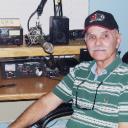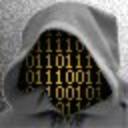Yahoo Answers is shutting down on May 4th, 2021 (Eastern Time) and beginning April 20th, 2021 (Eastern Time) the Yahoo Answers website will be in read-only mode. There will be no changes to other Yahoo properties or services, or your Yahoo account. You can find more information about the Yahoo Answers shutdown and how to download your data on this help page.
Trending News
Questions on astrophotography?
I have owned a C-11 on a german equatorial mount for several years now. It tracks beautifully, and I am considering expanding into photography. Pretty sure I want to go with a CCD approach, but my concerns are:
1. Color or monochrome with multiple exposures and filters? I've heard color is getting better in terms of fine detail - any experiences worth relating?
2. Do I need to take a laptop to the site? I have one, but it might get messy. What are the advantages / disadvantages?
3. What do I need for guiding?
I don't know much about it. I will also be working with my club and my telescope dealer friend, but every opinion helps. My long-term interests are in the area of deep-sky objects, although some lunar / planetary shots would be great and would obviously be easier in terms of exposure time, tracking fatigue, etc..
Thanks for your help!
5 Answers
- Anonymous1 decade agoFavorite Answer
A one shot color camera will get you color images much faster than using a monochromatic camera with red, green and blue filters, then combining the images plus a luminance frame into a color image. But you will find the monochromatic cameras to be more sensitive than the color camera. And you can use a hydrogen alpha filter with it to image emission nebulae even from the middle of cities. You can also use the camera for other things such as spectroscopy and exo-planet hunting if you so desire. Amateurs have already confirmed planets spotted by professionals with small telescopes and CCD cameras. The monochromatic cameras can also see into the UV and infrared bands. Overall, these cameras can do things with amatuer telescopes professionals with large telescopes could only dream of 30 years ago.
You will need a laptop computer at the site, and moreover a hefty portable power source for it and your telescope. Don't even think of using your vehicle's battery, it will be drained and you will be stuck in the hinterlands. Unless you plan to use one of the super sensitive video cameras to make videotape, the laptop computer is a must because CCD cameras create digital images. They can also be analyzed by astronomers for all sorts of useful information as well. The downside is of course, the need for a hefty power source and you will have to spend time later to get the images into a usable form. Astrophotography, whether film or CCD based is far too complex to describe in detail here.
As for guiding, you can use a separate guide scope mounted on the main scope, an off axis guider or you can use a CCD autoguider. Many of the more expensive and capable camera combine both imaging and guiding into one unit. It's much better to align the mount carefully on the celestial pole and let the camera and auto guider do the work for you. CCD imaging ruthlessly shows every flaw in your optics, focusing and guiding that film astrophographers never have to worry about. Take the easy way out and use a camera that can control the mount and do the guiding for you. Also, you will want a focal reducer to speed up the exposure time and get a reasonable field of view. Unless you want extreme closeups of small objects such as planetary nebulae or lunar craters, you need either a F/6.3 or F/3.3 focal reducer for your C-11.
- BullseyeLv 71 decade ago
I have an LX90 8" --------- and a DSI color and a DSI Pro camera-- along with several focal reducers, and a laptop. The DSI Pro is a monochrome camera with a color filter slide------- you need to take FOUR pictures , luminance, blue, green, red and then combine these shots using the software.
The CCD cameras are controlled by software located on the laptop. It is possible to guide AND image using one CCD camera but expect to spend a considerable amount of money for this feature. Normally folks mount a small "guide" scope to the top of the larger telescope and use a second "guide" camera to control the telescope mount. Cooled CCD cameras range in price from about $2000 to $9000 ! Check out the SBIG web site. You may also like to investigate a Stellacam or a Mallincam which send "live" images to a nearby monitor (or laptop). (video- astrophography)
You may want to start with a low cost web cam doing planetary photos just to see if you like astro-photography. Find a Meade DSI camera or a Toucam or Phillips web cam used on AstroMart http://www.astromart.com/ -------- software can be downloaded free on the internet. Good astro-photography requires a VERY GOOD polar alignment-------- and much post-processing software knowledge------ it's a long learning curve and can get very expensive.
Try to find an Astronomy Club in your area--- go to their star parties --- and ask lots of questions before you decide to do this.
- CirricLv 71 decade ago
Hi. I started astrophotography back in the film (analog) days so I had no choice. The first CCD cameras were primitive compared to todays and needed not only filters but multiple 'dark' shots to get any kind of an accurate image. The laptop in the field will show you a larger scale image to help you decide if you have what you wanted. Stars can be a problem because a perfectly focussed and steady star will only hit one of the three sections of a color pixel. I think the advantages of a CCD far outweigh the disadvantages. I used to guide with an off axis guider and a lens with an illuminated reticle. Today you take shorter exposures and 'stack' them in a computer. Much better technology in my opinion. Clear skies!
- screaming monkLv 61 decade ago
Aero, I too am eager to pursue this increasingly affordable hobby having finally purchased a wonderful ED80 'apo' .
Surely I know less than you regarding astrophotography, but I have found some wonderful sites and groups devoted to this delightful discipline.
Have you considered the web-cam approach which is suited solely for planetary and lunar imaging? Also, DSLR cameras are plummeting in price, and I have seen such beautiful photos taken with these (usually less than a thousand bucks) cameras. It would seem that the discontinued Canon 20Da DSLR was the creme de la creme of affordable DSLR cameras. Apparently, it could absorb (not filter out) more of the precious 'reds' as seen in many DSO's.
I wrote Canon some months ago and was told that digital single reflex cameras are constantly evolving, and with the growing interest in astrophotography, Canon said it is considering offering astro-friendly cameras again in the near future! This sounds exciting, but as you know, any regular DSLR can produce marvelous astro-pix in the hands of a dedicated amateur.
I suspect that you have heard of Registax. It is so wonderful that there is so much interest and support out there for those hobbyists interested in astrophotography. Though I feel like I am in kindergarten with my 8 year old 2 MP toy camera, the bright celestial objects that I capture, entices me to continue my education in this exciting field.
Sorry if I bored you with details you knew anyway, but when I saw your query my good old aging oculars widened in excitement!
You likely know this already, but Yahoo has some wonderful groups which discuss everything 'under the sun', and in our case---beyond.
- How do you think about the answers? You can sign in to vote the answer.
- divyaLv 41 decade ago
Astrophotography is a specialized type of photography that entails making photographs of astronomical objects in the sky such as the Moon, Sun, planets, stars, and deep sky objects such as star clusters and galaxies.
Overview
Astrophotography ranges from simple images of bright objects to very complex exposures designed to reveal objects that are too faint to observe with the naked eye. With only a few exceptions, almost all astrophotography employs time exposures since both film and digital cameras can accumulate and sum light photons over long periods of time. This is just one of many distinct aspects of astrophotography that sets it apart from conventional photography.
Astrophotography poses challenges that are distinct from normal photography, because most subjects are usually quite faint, and are often small in angular size. Effective astrophotography requires the use of many of the following techniques:
Mounting the camera at the focal point of a large telescope
Film emulsions with low light sensitivity or specialized CCD cameras
Very long exposure times and/or multiple exposures (often more than 20 per image).
Accurate tracking of the subject to compensate for the rotation of the Earth during the exposure
Use of filters to reduce background fogging due to light pollution of the night sky.
[edit] History
The first astrophoto is attributed to John William Draper, who took a photo of the moon in 1840. His son, Henry Draper, later became the first person to photograph the Orion Nebula in 1880, which was essentially the first deep sky astrophoto.
Today, astrophotography is a fast growing hobby that is popular among photographers, amateur astronomers, and hobbyists of all ages. Commercial astrophotography equipment is easy to find, and modern digital cameras are increasing in popularity due to lower cost and ease of use. However, skill and technique are extremely important, and the hobby can become a life-time passion or short-term frustration.
Source(s): for more info on this topic refer: http://en.wikipedia.org/wiki/Astrophotography





